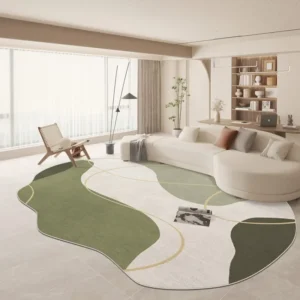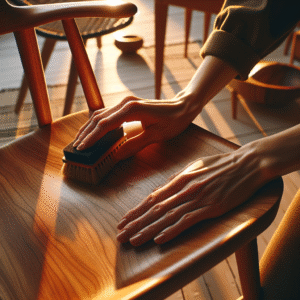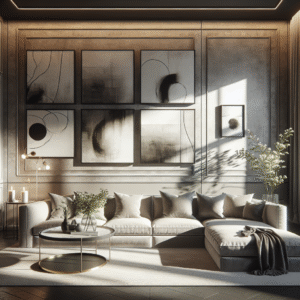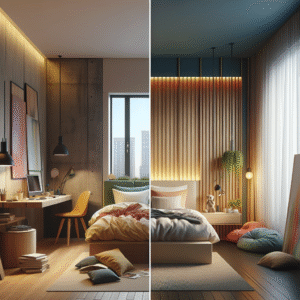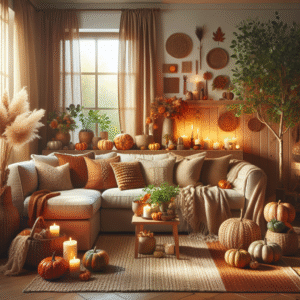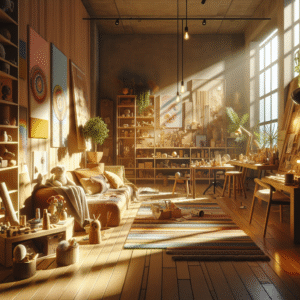Building Outdoor Fireplaces With Chimney Design Considerations
Do you dream of cozy evenings around a flickering outdoor fireplace? Building an outdoor fireplace can transform your backyard into a sanctuary. Yet, many homeowners overlook critical chimney design considerations, leading to safety hazards and inefficiencies. In this comprehensive guide, you’ll learn essential tips for effectively constructing outdoor fireplaces with attention to chimney design, ensuring an enjoyable and safe experience.
In this article, we’ll explore:
- The importance of chimney design in outdoor fireplaces
- Key materials and building techniques
- Common mistakes to avoid
- Real-world examples and case studies
- FAQs regarding outdoor fireplace and chimney design
Why Chimney Design Matters for Outdoor Fireplaces
When building an outdoor fireplace, chimney design plays a crucial role in safety and functionality. A well-designed chimney enhances draft, minimizes smoke, and prevents carbon monoxide accumulation, contributing to a pleasant outdoor ambiance.
The Basics of Chimney Function
The chimney’s primary function is to remove smoke and gases from the fire. A properly sized and positioned chimney improves airflow, allowing for efficient burning of your chosen fuel.
Key Design Elements
- Height: The chimney should extend at least 3 feet above the roofline for optimal smoke expulsion.
- Flue Size: Match the flue size to the fireplace opening to ensure adequate draft.
- Material: Use fire-resistant materials to prevent hazards.
Materials to Consider for Your Outdoor Fireplace
Choosing the right materials can make a significant impact on the durability and aesthetic of your outdoor fireplace.
Brick vs. Stone
Brick offers a classic look and excellent thermal mass. Stone, however, provides a rugged aesthetic and is often more durable under outdoor conditions.
Concrete and Steel Options
For a modern look, concrete or steel can be an excellent choice. They are fire-resistant and can be formed into various designs.
Building Techniques for a Safe Outdoor Fireplace
Implementing correct building techniques is essential to ensure longevity and safety. Here are some critical steps:
Foundation Requirements
A stable foundation prevents settling and cracking. Use concrete footings at least 12 inches deep, extending below freezes in colder climates.
Insulation Techniques
Proper insulation minimizes heat transfer to flammable materials. Consider using fire bricks and insulating boards along the firebox and flue.
Common Mistakes to Avoid
Building an outdoor fireplace isn’t without its pitfalls. Here are common mistakes to steer clear of:
- Ignoring Local Codes: Always check local building codes and regulations before starting your project.
- Neglecting Airflow: Poor chimney design can lead to inefficient burning and smoke problems.
- Skimping on Quality: Using inferior materials may save money initially but can result in costly repairs and safety hazards later.
Real-World Examples and Case Studies
Let’s look at a few real-world examples to illustrate best practices and common pitfalls in outdoor fireplace designs.
Case Study: The Efficient DIYer
A homeowner constructed an outdoor fireplace using locally sourced stone. By extensively researching chimney height and flue sizing, they achieved seamless airflow and were able to enjoy evenings without smoke odors.
Case Study: The Common Oversight
Another homeowner built a gorgeous outdoor fireplace but neglected airflow considerations, leading to smoke backing up into their patio area. This resulted in a complete remodel of their chimney system, highlighting the importance of proper design.
FAQs About Outdoor Fireplaces and Chimney Design
What materials are ideal for outdoor fireplaces?
Brick, stone, concrete, and steel are widely recommended due to their durability and fire-resistant properties.
How high should my chimney be?
A chimney should rise at least 3 feet above the roofline for optimal draft and smoke expulsion.
Can I build an outdoor fireplace myself?
Yes, but it’s best to have basic masonry skills and consult local regulations before starting.
What are common mistakes in outdoor fireplace construction?
Neglecting airflow and local codes, using subpar materials, and poor foundation choices are common errors.
Conclusion & Next Steps
Building an outdoor fireplace with proper chimney design is a rewarding project that adds value and charm to your home. By understanding key elements like chimney height, flue size, and material selection, you can create a safe and efficient fireplace.
For more detailed guidance on outdoor living spaces, consider exploring our articles on patio design and choosing the right outdoor furniture. Ready to start your outdoor fireplace journey?
Content Disclaimer
The information provided in this article is for educational purposes only. Always consult with a licensed professional for construction or legal advice relevant to your specific circumstances.
Categories
- Accent Walls & Ceilings (11)
- Art Curation & Gallery (26)
- Bedding Style Trends (41)
- Bedroom Makeover (31)
- Bohemian & Eclectic Styles (11)
- DIY & Budget-Friendly Decor (10)
- Eco-Friendly Design (11)
- Furniture Care (30)
- Home Decor & Design Ideas (101)
- Home Wellness Spaces (11)
- Integrated Outdoor Living (10)
- Kids and Nursery Decor (11)
- Living Room Decor (31)
- Minimalist & Japandi Style (14)
- Mix & Match Techniques (30)
- Modern & Contemporary Design (10)
- Rug Sizing & Placement (30)
- Seasonal Home Decor (33)
- Small Space Solutions (15)
- Wall Art & Painting Tips (33)
Recent Posts
Recent Comments
Archives
Product Gallery
-
 Large Area Green Rugs for Bedroom Nordic Living Room Decoration Shaped Carpet Irregular Plush Lounge Rug Home Thick Washable Mat Rated 5.00 out of 5$57.07 – $359.83Price range: $57.07 through $359.83
Large Area Green Rugs for Bedroom Nordic Living Room Decoration Shaped Carpet Irregular Plush Lounge Rug Home Thick Washable Mat Rated 5.00 out of 5$57.07 – $359.83Price range: $57.07 through $359.83 -
 Nordic Style Rugs for Bedroom Morandi Living Room Decoration Carpet Large Area Geometry Lounge Rug Home Cloakroom Non-slip Mat Rated 5.00 out of 5$40.98 – $620.81Price range: $40.98 through $620.81
Nordic Style Rugs for Bedroom Morandi Living Room Decoration Carpet Large Area Geometry Lounge Rug Home Cloakroom Non-slip Mat Rated 5.00 out of 5$40.98 – $620.81Price range: $40.98 through $620.81 -
 Irregular Shapes Living Room Decoration Carpet Modern Style Rugs for Bedroom Home Thicken Plush Rug Fluffy Soft Lounge Floor Mat Rated 4.75 out of 5$58.00 – $360.83Price range: $58.00 through $360.83
Irregular Shapes Living Room Decoration Carpet Modern Style Rugs for Bedroom Home Thicken Plush Rug Fluffy Soft Lounge Floor Mat Rated 4.75 out of 5$58.00 – $360.83Price range: $58.00 through $360.83





